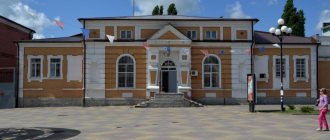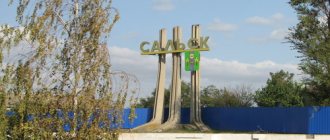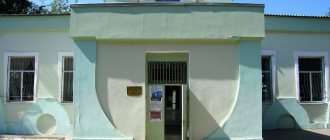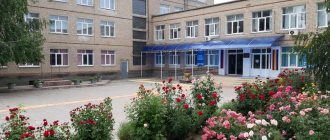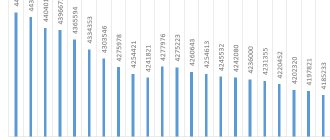City in Rostov region, Russia
| Bataysk Bataysk | |
| City[1] | |
| View of Bataysk | |
| Flag Coat of arms | |
| Location of Bataysk | |
| Bataysk Location of Bataysk Show map of Russia Bataysk Bataysk (Rostov region) Show map of Rostov region | |
| Coordinates: 47°10′N 39°44'E / 47.167°N Latitude 39.733°E / 47.167; 39.733Coordinates: 47°10′N 39°44'E / 47.167°N Latitude 39.733°E / 47.167; 39.733 | |
| A country | Russia |
| Federal subject | Rostov region[1] |
| Based | 1769 |
| City status from | 1938 |
| Government | |
| • Mayor | Valery Putilin |
| Height | 5 m (16 ft) |
| population (2010 Census)[2] | |
| • General | 111,843 |
| • Evaluate (2018)[3] | 126,769 (+13.3%) |
| • Classify | 141st in 2010 |
| Administrative status | |
| • Subordinate | Bataysk City District[1] |
| • Capital from | Bataysky urban district[1] |
| Municipal status | |
| • Urban district | Bataysky urban district[4] |
| • Capital from | Bataysky urban district[4] |
| Timezone | UTC + 3 (MSK [5]) |
| Postal code(s)[6] | 346880-346884, 346886-346889, 346892-349894 |
| Dial code(s) | +7 86354 |
| OKTMO I WOULD | 60707000001 |
| Web site | www.bataysk-official.rf |
Bataysk
(Russian: Bataysk) is a city in Rostov Oblast, Russia, located 15 km (9.3 mi) southwest of Rostov-on-Don. Population: 111,843 (2010 Census);[2]107,438 (2002 Census);[7]91,930 (1989 Census).[8]
Arts and culture
Libraries
- Central State Library named after Maxim Gorky
- Central State * Children's Library of Nadezhda Krupskaya
- Mayakovsky Library
- Chekhov Library
- Pushkin Library
- Leo Tolstoy Library
- Lermontov Library
- Yesenin Library
- Nekrasov Library
- Turgenev Library
Places of culture
- MBUK "City Center of Culture and Leisure"
- MBUK "Bataysky Historical Museum"
- Cinema "Illusion"
Monuments
- There is a monument to Lenin in the central square.
- Memorial train - “In memory of the revolutionary, military and labor glory of the Bataysk railway workers.”
- Memorial
- Memorial
- In the Aviator Park there is a stele with a MiG-15.
- Breast statue
- The monument to A. Pushkin and his wife N. Goncharova was erected on Kirov Street in 2013.
- Memorial to the First World War - installed on Station Square in 2014.
- The sculpture “Bears” was opened in 2022 in the city park.
Bataysk City Day is celebrated on the last Sunday of September.
Automobile highways
The following roads pass through Bataysk:
- M4 "Don" runs tangentially from the east of the city.
- A135 is a public road that has the status of an object of federal significance. It is an access road from the M4 Don highway to Rostov-on-Don. The total length of the road is 16 km.
- 60R-1 is a public highway of regional importance, the length of which is 182 km. The highway passes through the territory of the Krasnodar Territory. It is owned by the Rostov region. The road surface is asphalt.
- 60K-59 is a regional highway that runs through the Rostov region. The total length of the route is 20 km. The road surface is asphalt.
- E50 is a European route that passes through the cities of the following countries: France, Czech Republic, Germany, Slovakia, Russia, Ukraine. The total length of the highway is 6,000 km.
- E115 is a European route with a length of 1,730 km. The route passes only through the territory of Russia through Moscow, Yaroslavl, Rostov-on-Don, Voronezh, Novorossiysk.
Recommendations
Notes
- ^ a b c d f
Law No. 340-ZS - ^ a b
Federal State Statistics Service of Russia (2011).
“All-Russian Population Census 2010. Volume 1" [All-Russian Population Census 2010, vol. 1]. All-Russian Population Census 2010 [All-Russian Population Census 2010]
(in Russian). Federal State Statistics Service. - "26. The size of the permanent population of the Russian Federation by municipalities as of January 1, 2022.” Federal State Statistics Service. Retrieved January 23, 2022.
- ^ a b c
Law No. 235-ZS - "On the calculation of time." Official Internet portal of legal information
(in Russian). June 3, 2011. Retrieved January 19, 2022. - Post office. Information and computing center of OASU RPO. ( Post office
).
Search for postal facilities ( Search for postal facilities
) (in Russian) - Federal State Statistics Service of Russia (May 21, 2004). “The population of Russia, the constituent entities of the Russian Federation as part of federal districts, urban settlements, urban settlements, settlements, settlements is 3 thousand or more people” [Population of Russia, its federal districts, constituent entities of the federation, districts, urban settlements, rural settlements - administrative centers, rural settlements with a population of more than 3000 people] (XLS). All-Russian Population Census of 2002 [All-Russian Population Census of 2002]
(in Russian). - “All-Union Population Census of 1989. The actual population of the union and autonomous republics, autonomous regions and districts, territories, regions, urban settlements and villages. Deaneries and parishes - Bataysk deanery - Parishes - Ascension Church of Bataysk - History of the parish.” rostoveparhia.ru
. Retrieved August 24, 2022. - ABC News Australia. “The Russian city puts breasts on a pedestal.”
. Archived from the original on July 14, 2008. Retrieved July 14, 2008.
Sources
- Legislative Assembly of the Rostov region. Law No. 340-ZS of July 25, 2005 “On the administrative-territorial structure of the Rostov region,” as amended. Law No. 270-ZS of November 27, 2014 “On Amendments to the Regional Law” On the Administrative-Territorial Structure of the Rostov Region “”. Came into force on the date of official publication. Published: “Our Time”, No. 187–190, July 28, 2005 (Legislative Assembly of the Rostov Region. Law No. 340-ZS of July 28, 2005 On the administrative-territorial structure of the Rostov Region
As amended by the Law of November 27, 2014 No. 270 -ZS.
On amendments to the regional law "On the administrative-territorial structure of the Rostov region"
. Valid from the date of official publication.). - Legislative Assembly of the Rostov region. Law No. 235-ZS of December 27, 2004 “On establishing the border and granting the status of an urban district to the municipal formation” City of Bataysk “”. Entered into force on January 1, 2005. Published: “Our Time”, No. 339, December 29, 2004 (Legislative Assembly of the Rostov Region. Law No. 235-ZS of December 27, 2004. On establishing the border and giving the status of a city district to a municipal entity "city of Bataysk"
. Valid from January 1, 2005).
City infrastructure
Problems with the infrastructure of Bataysk are the same for all districts. Firstly, there are seasonal hot water outages. During the warm season, residents of high-rise buildings are left without hot water. The only thing that saves us is the presence of water heaters and water heating systems.
The second is a small water pressure. In order for the water supply to work, pumps are often installed on the top floors of houses.
The third bad weather is seasonal flooding. Bataysk is located in a lowland, and seasonal flooding is common here. Therefore, when choosing a house in the private sector, it is necessary to inspect the basements for traces of water, and if there is no basement at all in a private house, it is worth considering whether everything is okay here.
Consequences of flooding
Fourth – huge expenses for heating. The city's housing and communal services charge the population a disproportionate payment for heating in the winter - almost half of the amount of all services. An autonomous heating system for houses becomes a salvation.
There are 11 secondary schools in the city, which are not as prestigious as Rostov’s, but provide sufficient knowledge. It is just as difficult for a child to get into kindergarten as in any other Russian city; you must wait in line and pay an official fee.
Among the special education institutions in the city, there is the Bataisky Railway College, which trains specialists to work on the local railway. stations.
Bataysk Railway College
The cultural life of the city is in full swing. In Bataysk there are 3 music schools, several centers for the development of children and youth, 5 cultural centers in the districts, a cinema, a sports school, and an art school. The city does not experience an acute shortage of restaurants and cafes, just for them you won’t have to travel to Rostov.
There is one clinic and one hospital on the territory of Bataysk. Those city residents who go to Rostov to earn money mostly undergo treatment in the Don capital, since many enterprises have their own medical insurance.
Transport throughout the city runs regularly and without delays, but there are too many people wanting to leave during rush hour, and a slight crush is created in the cabin. Minibuses (15-20 minutes drive) and electric trains (22 minutes) run between Bataysk and Rostov.
Bataysk
The settlement of the territory on which modern Bataysk is located began long before the appearance of the city itself. In different centuries, Scythians, Sarmatians, Alans, Cimmerians and some other tribes lived here. Thanks to the intersection of water and land trade routes, many shopping centers appeared in these places, some of which turned into cities that still exist today (Azov, Rostov). The official year of the founding of Bataysk is considered to be 1769. During almost the entire 18th century, the territory of modern Bataysk and the adjacent lands passed from the Russian Empire to Turkey and back several times. The dispute was resolved only during the Russian-Turkish war. The conquered lands were assigned to the Azov province. In 1769, when the war with the Turks was not yet over, Russian peasants came to the territory of modern Bataysk. Having settled on the Koysug River, they founded the Batayskaya Sloboda. The exact etymology of the word “Bataisk” has not yet been established. Scientists put forward different versions. According to one of them, the name of the city comes from the name of the Bataisu River, which can be translated as “Batu Creek.” According to legend, Batu Khan’s camp was located near this river. According to another version, the word “Bataysk” is a distortion of the Turkic word Ba-Tai-Su, which means “wet lowland with a stream.”
In 1801, the new settlement increased significantly in size, but still remained sparsely populated. There was only one street in the settlement, which eventually became known as Embankment. Today the first street of Bataysk is called Polovinko.
By the middle of the 19th century, Batayskaya Sloboda gradually turned into a rapidly developing village, the population of which grew steadily and exceeded the population of some small county towns. New administrative buildings, the Church of the Archangel Michael and even a rural applied school appeared in the village. The number of streets has also increased: Tserkovnaya (modern Leningradskaya), Mikhailovskaya (modern Lunacharsky Street), Jordansky and Mostovoy lanes (modern Kalinin and Kuibyshev streets). In 1856, Batayskoye became the administrative center of Bataysky district. The construction of the Vladikavkaz railway became a powerful impetus for the development of the village. The railway had not only economic, but also strategic importance. In July 1875, the Bataysk station was opened. During the First World War, as well as the Civil War of 1918-1920. the role of the Bataysk station has grown significantly. It becomes a connecting link between the south of Russia and its central part.
Bataysk in the first half of the 20th century
Bataysk was considered one of the centers of the revolutionary movement. The first revolutionaries in the village were railway workers. On the night of December 7–8, 1905, all freight and passenger trains stopped at the local station. An exception was made only for trains carrying weapons, medicines and combatants. Despite the fact that the strike was completely peaceful and no one was injured during it, trials against the railway workers began immediately after the suppression of the uprising. The workers were tried in military courts. Many railway workers went to prison. But this did not stop the strikes. They continued until the 1917 revolution.
In October 1917, the Bolsheviks of Bataysk founded a revolutionary committee that was responsible for carrying out all revolutionary events. At the end of October, the revolution in Petrograd was adopted in Bataysk at a rally of railway workers. But this was not the final victory of the revolution. The civil war began. A detachment of Red Guards under the leadership of S.V. Akinin was expelled from Bataysk. The population participated in collecting food for the Red Army soldiers. However, the forces of the parties were not equal. The Whites had advantages. On December 2, the Red Army soldiers retreated. A regime of terror and violence was established in the village.
In February 1918, the Red Army soldiers managed to recapture Bataysk, but the situation in the village still remained tense. Bataysk was considered one of the most important strategic points on the approaches to Rostov. Military trains with food and weapons passed through the Bataysk station. Perhaps it was for this reason that the White Guards sought to seize power in the village. In May 1918, the dictatorship of the “whites” was again established in Bataysk. For two years, the residents of Bataysk prepared for the decisive battle. The Bolsheviks carried out subversive activities in the ranks of the counter-revolutionaries, pushing them to desertion. In the first months of 1920, a huge number of White Guards went over to the side of the Red Army. On March 1, 1920, the White Guards were expelled from the village.
The village suffered significantly during the fighting on the Don in 1918-1920. At the beginning of March 1920, Soviet power in the village of Bataysk was finally established. The restoration of the economy began. In 1924, the Bata region was formed. The village of Batayskoye continues to be the administrative center. In 1925, electrification of the area began, which contributed to the development of industry and its transition to another level. In 1927, the village received the status of a workers' settlement. And 11 years later, at the end of October 1938, the workers’ village became the city of Bataysk. By that time, Bataysk already had several kindergartens and hospitals, more than twenty schools, a bakery, a dairy factory and a local periodical - the newspaper “Forward”.
In the early 30s, an aviation school of the Civil Air Fleet appeared in Bataysk (in 1938 it was renamed the A.K. Serov Aviation School), which was destined to occupy a special place in the history of the city. It was in this school that 103 Heroes of the Soviet Union were trained, including A.P. Maresyev, V.I. Popkov, N.M. Skomorokhov. Even before the opening of the school, in 1930, the authorities decided to build an airfield on the eastern outskirts of Bataysk. A new microdistrict appeared here, called Aviagorodok. Subsequently, airfield workers and aviation school teachers settled in Aviagorodok.
Great Patriotic War and post-war years
During the Great Patriotic War, the city, like many other settlements located in the southwest of the country, was occupied by the Nazi invaders. The occupation of Bataysk began in July 1942, ending in early February 1943. Over the course of several months of occupation, the city suffered significant damage. 3 thousand residential buildings, a railway junction, a hospital and many other administrative institutions were destroyed. The city lost more than three thousand of its citizens. Many Batai residents died on the front line.
In the post-war years, residents of Bataysk were engaged in the restoration of the city economy. During the restoration of Bataysk, significant attention was paid to the construction of cultural institutions. 3 clubs and 3 libraries appeared in the city. In 1948, a city park of culture and recreation was opened, which became the venue for all city holidays.
The modern stage of the city's development began in the 60s of the last century. In 1961, the first drinking water supply appeared in Bataysk. By the end of the 60s, the construction of new houses and businesses began in the city. In addition, the North Caucasus Railway was modernized. At the beginning of the new millennium, several more new enterprises appeared in the city.
Urban population
Bataysk is one of the cities whose population has not decreased since the collapse of the Soviet Union. In the 90s, the population was 93 thousand people, and in 2015 - already 120 thousand. The increase in numbers is mainly due to the construction of a large number of residential buildings and the development of the city's infrastructure. This attracts a young working population.
Mostly young families live in new buildings in Bataysk. The city has every opportunity for the development and education of the younger generation.

